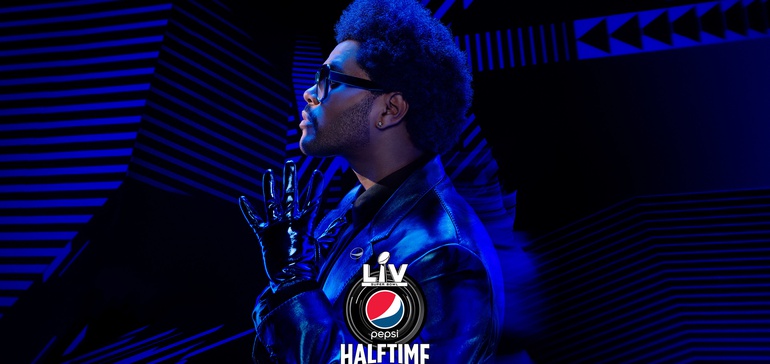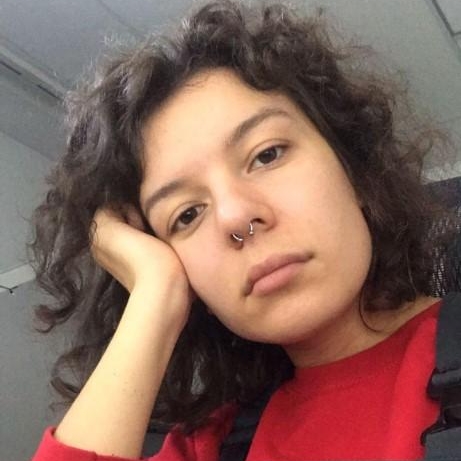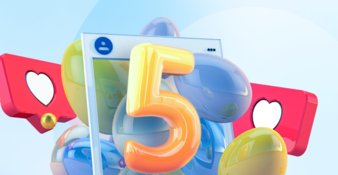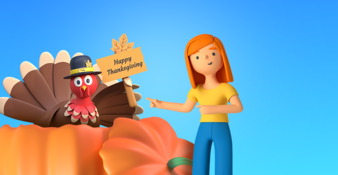5 marketing lessons from Super Bowl: halftime shows, ads, and more

Article summary
In this article, we talk about marketing lessons brands can pick up from the Super Bowl commercials and halftime shows. We run a social listening analysis of the Super Bowl and show how influencer marketing, consumer insights, and market research helps the brands.
The Super Bowl has the reputation of being marketers' favorite media event.
While Christmas and St. Valentine's Day are good for sales and coming up with creative campaigns, the Super Bowl is the time of state-of-the-art advertising: the most successful brands and agencies are competing for the attention of the viewer and media buzz during the commercial slots.
Both the Super Bowl halftime show itself and the commercial during it often show us the most innovative, planned-out, and inventive marketing of the season. That's why marketers can learn a lot from analyzing campaigns around the event.
Before we move on to the marketing lessons, let's quickly examine the Super Bowl halftime show and what impact it has on customers.
By signing up I agree to the Terms of Use and Privacy Policy
What is the Super Bowl halftime show?
The halftime shows are traditional to American sports events and aim to provide entertainment to the viewers during the breaks of the games. However, what makes the Super Bowl halftime show so iconic is the status of the entertainers: since the 90s the Super Bowl invited A-list celebrities to perform including Michael Jackson and Beyonce.
The halftime show has become a pop culture phenomenon both representing the relevant pop culture of the year and being part of it itself. You can say that the Super Bowl, as well as the halftime show, have become a symbol of American life. Nowadays, the event is the most viewed TV stream in America. According to Nielsen SoundScan data, the halftime performers regularly experience significant spikes in weekly album sales and paid digital downloads due to the exposure.
For example, in 2020 102 million total viewers tuned in for the Super Bowl and it is said that the number of those who watched the halftime show by Jennifer Lopez and Shakira tripled on streaming platforms. As Ali Azal, VP of Marketing in GRIN, puts it in the interview with Forbes:
The Super Bowl is the biggest viewing event in the United States, whether you are a fan of football or not. It allows brands to get in front of millions of consumers in one sitting, generate brand awareness and maximize their impact across all generations.
If we want to confirm how much buzz there is around the Super Bowl, all we have to do is look into social listening data surrounding the event.
The Super Bowl: social listening analysis
If we look at the sheer volume of mentions of the Super Bowl, we can immediately recognize how many conversations the event actually generates. Just in the last 30 days "Super Bowl" was mentioned more than 480 thousand times online and gathered 7 billion impressions. And the game hasn't even happened yet!

The sentiment around the event is overwhelmingly positive, which works well for brands trying to improve their reputation. By associating your product with an event that invokes positive emotions, you tie some of these feelings to your own brand.

We can see that both the marketing experts and hard data prove that Super Bowl is an excellent opportunity for promotion. While it's unlikely that your brand can afford to buy a 4 million dollar ad slot, we can still learn a lot from the show itself and the event around. So here are 5 lessons on how to win this marketing game and get your touch-down!
By signing up I agree to the Terms of Use and Privacy Policy
Marketing lessons from the Super Bowl
Lesson 1: Let the influencer be on your team
One reason the Super Bowl is popular even among those who are not into football is the artists they invite. I doubt that the Venn diagram of Lady Gaga fans and sports fans is close to one circle, but her performance was enough to gather 63 million views for the halftime show.
Of course, we can't escape the fact the official sponsor for the halftime show is Pepsi thus all the shows and artists are tied to their brand image. We'll talk about this clever collaboration and the creative way they are approaching the Super Bowl marketing this year a bit later in the article.
For now, I wanted to highlight how brands are using influencers in their ads. The commercial time slot is incredibly expensive, so you want to make sure you stand out. One way to do it is to invite the current American darlings.
Nissan’s Super Bowl 2022 ad is called “Thrill Ride” and features actress Brie Larson. It’s expected to have content that’s more on the lighthearted side. Their chief marketing officer shared that the creative will entertain viewers and inspire some smiles.
Frito-Lay is stepping out on the field with an ad featuring an undisclosed "celeb superstar” in the commercial. Based on their past creative with celebs like Matthew McConaughey getting trapped in a vending machine, it’s safe to say that they’ll aim to make viewers laugh at Super Bowl SVI.
The recent Super Bowl ads of 2021 featured Lil Nas X, Timothee Chalamet, Serena Williams, and other celebrities that are currently in the spotlight of pop culture.
The thing that stands out with all these commercials is how up-to-date they are. The brands are really aiming for the names that are hot right now - nobody is hiring Johnny Depp for their ad.
Apply this principle to your marketing influencer campaigns. Obviously, we don't expect you to collaborate with Billie Eilish. However, make sure your influencer research is up to date and find fresh and upcoming online creators - not just the established bloggers and bloggers who might not be so relevant any more.
Lesson 2: Be creative with your game plan
Now it's time to talk about Pepsi.
Obviously, since the brand sponsors the show, it's already putting itself out there. In addition to that, Pepsi traditionaly showed a commercial during the ad break with various degrees of success. However, in 2021 they decided to go for something different.
Instead of buying a 30-second ad during the gamerunning, they decided to run a national TV campaign promoting its sponsorship of the big game's halftime show over the course of the several weeks leading up to the highly anticipated competition. So they basically promoted the show not the product.

The multi-channel campaign utilized national TV, a special website with behind-the-scenes videos and an augmented reality (AR) experience on Instagram.
This approach allowed the brand to leverage the 12-minutes of halftime show that attracts more viewers than the game (and the commercials).
This move from Pepsi inspires a creative approach to your own marketing campaigns: think about the ways to maximize the resources you get to get the best profit. For years Pepsi focused on running ads, while the sponsorship of the show took a bit of a back seat. Last year they decided to change it up and won!
Think about the opportunities and channels you're missing out, evaluate the market, and throw the ball!
Lesson 3: Don't be afraid of emotions
However rational we might be, the truth is oftentimes are decisions are ruled by emotions. Event the purchasing decisions.
Creating an emotional video for your Super Bowl slot is a brilliant idea. Rooting for your favourite team is already an emotional experience and when your pair it up with a touching story, you are sure to be remembered by customers.
For example, Budweiser lauched a real tear-jerker for the Super Bowl 2022. The commercial features one of Budweiser’s famous Clydesdales hurting its leg, recovering, and being reunited with its owners some time later. The iconic Budweiser image was pared with heartfelt scenes and music. The comments on YouTube say it brough them to tears.
Budweiser aimed to connect with the viewers emotionally and succeded. Try replicating their win by finding an emotinal spot in your brand and highlighting it for consumers.
Lesson 4: Use the customers insights to win
That great marketing has to start with consumer insights is common knowledge.
Super Bowl ads have proven that brands that use these insights well are able to get the attention of their audiences better through effective communication. Infact, good application of consumer insights in ads makes marketing messages more memorable particularly when that message is about product benefits.
A great example of a brand that hacked this strategy well is Verizon. In its Super Bowl ad, Verizon connected survivors with the people who rescued them by having them make calls via the Verizon network.
The ad was among the top 10 most viewed ads during the 2019 Super Bowl. Marketers can apply this strategy by finding emotionally unique insight about their audience and use it to connect with them better.
Awario can help you find consumer insights by analyzing their conversations: by choosing relevant keywords you can see what they care about, their gender, age, location, and more!
Lesson 5: Tackle the online buzz
As we mentioned earlier, the online conversations around the Super Bowl gather more then 7 billion views in 30 days. You can join this online buzz and win some of these views for yourself - and you don't even have to spend millions to host your ad on TV.
Take a lesson from Oreo. When the power went out during the Super Bowl 2017, Oreo immediately reacted and proved you can get noticed in other mediums. They proactively used the blackout to their advantage by pushing their social media campaigns.
Power out? No problem. pic.twitter.com/dnQ7pOgC
— OREO Cookie (@Oreo) February 4, 2013
Join the Super Bowl discussions prior and during the event, and maybe your witty commentary will help you boost brand awareness and promote your product.
You can use Awario to find conversation trends and figure out what exactly everyone is talking about: be it the winning team, the certain celebrity guest, or a hot commercial. You can use the Topic cloud to discover the most prominent points of conversations or spot what exactly generates an influx of mentions through Awario Insights. Sign up for the free trial here!














